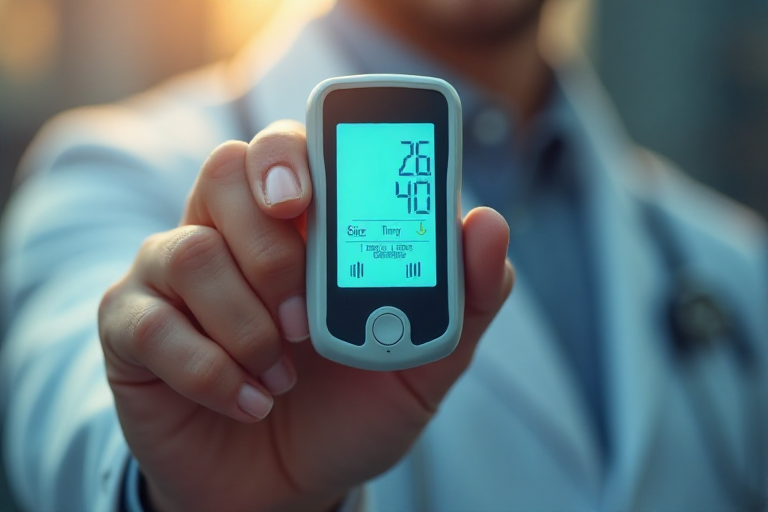
Maintaining healthy blood sugar levels is crucial for overall well-being, especially for individuals with diabetes or those at risk of developing the condition. Blood sugar, or glucose, is the primary source of energy for our cells, and its regulation is essential for maintaining energy levels, cognitive function, and long-term health. In this article, we will explore the importance of blood sugar health, the science behind blood sugar meters, and how these devices can help you manage your glucose levels effectively.
The Importance of Blood Sugar Health
Blood sugar levels are influenced by various factors, including diet, physical activity, stress, and medication. When blood sugar levels are too high (hyperglycemia) or too low (hypoglycemia), it can lead to serious health complications. Chronic high blood sugar can damage blood vessels, nerves, and organs, increasing the risk of heart disease, kidney failure, and vision problems. On the other hand, low blood sugar can cause dizziness, confusion, and in severe cases, loss of consciousness.
For individuals with diabetes, monitoring blood sugar levels is a daily necessity. However, even for those without diabetes, understanding and managing blood sugar can contribute to better energy levels, weight management, and overall health. A balanced diet, regular exercise, and stress management are key components of maintaining healthy blood sugar levels.
The Science Behind Blood Sugar Meters
Blood sugar meters, also known as glucometers, are portable devices that measure the concentration of glucose in the blood. These devices have revolutionized diabetes management by allowing individuals to monitor their blood sugar levels at home, work, or on the go. But how do they work?
Most blood sugar meters use a small drop of blood, typically obtained by pricking the finger with a lancet. The blood is then applied to a test strip, which contains enzymes that react with glucose. This reaction generates an electrical current, which the meter measures and converts into a blood sugar reading. The entire process takes just a few seconds, providing immediate feedback on glucose levels.
Modern blood sugar meters are highly accurate and user-friendly. Many models come with features such as memory storage, which allows users to track their blood sugar levels over time, and connectivity options that enable data sharing with healthcare providers. Some advanced meters even offer continuous glucose monitoring (CGM) capabilities, providing real-time glucose readings without the need for frequent finger pricks.
Choosing the Right Blood Sugar Meter
With so many blood sugar meters available on the market, choosing the right one can be overwhelming. Here are some factors to consider when selecting a blood sugar meter:
- Accuracy: Look for a meter that has been clinically validated for accuracy. This ensures that the readings you get are reliable.
- Ease of Use: Consider the size of the meter, the ease of inserting test strips, and the readability of the display. A user-friendly meter can make the testing process less cumbersome.
- Cost: Blood sugar meters and test strips can be expensive, so it’s important to consider the ongoing cost of supplies. Some meters are more affordable, but the cost of test strips can add up over time.
- Additional Features: Some meters offer extra features like Bluetooth connectivity, data tracking, and compatibility with smartphone apps. These features can be helpful for those who want to closely monitor their blood sugar trends.
Tips for Effective Blood Sugar Monitoring
Monitoring your blood sugar levels is only effective if you do it correctly. Here are some tips to ensure accurate and consistent readings:
- Wash Your Hands: Always wash your hands before testing to avoid contamination that could affect the reading.
- Use Fresh Test Strips: Make sure your test strips are not expired and are stored properly. Damaged or expired strips can lead to inaccurate results.
- Follow Instructions: Each blood sugar meter comes with specific instructions. Make sure to read and follow them carefully to get the most accurate readings.
- Keep a Log: Record your blood sugar readings along with the time, date, and any relevant notes (e.g., meals, exercise, medication). This can help you and your healthcare provider identify patterns and make necessary adjustments to your management plan.
Conclusion
Understanding and managing blood sugar levels is essential for maintaining good health, particularly for individuals with diabetes. Blood sugar meters are invaluable tools that provide immediate feedback on glucose levels, helping users make informed decisions about their diet, exercise, and medication. By choosing the right meter and following best practices for monitoring, you can take control of your blood sugar health and reduce the risk of complications.
Remember, while blood sugar meters are powerful tools, they are just one part of a comprehensive diabetes management plan. Regular check-ups with your healthcare provider, a balanced diet, and a healthy lifestyle are equally important for maintaining optimal blood sugar levels.